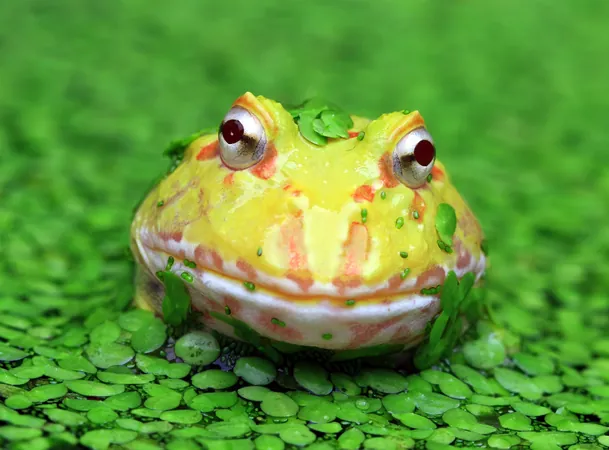
Ancient Tadpole Fossil Unearthed in Argentina: A Window into the Evolution of Amphibians!
2024-11-05
Author: Charlotte
A Remarkably Preserved Specimen
The fossil, beautifully embedded in a slab of sandstone, offers scientists an unprecedented peek into the anatomy of this ancient tadpole. It features well-preserved details of its skull and backbone, along with impressions of its eyes and nerve endings.
Mariana Chuliver, a biologist at Maimonides University in Buenos Aires, remarked, “Not only is it the oldest tadpole known, but it is also the most exquisitely preserved.” This specimen is pivotal as it provides clues about the tadpole stage of the frog lineage that dates back approximately 217 million years.
Unraveling the Mysteries of Frog Evolution
Measuring about half a foot in length, this ancient tadpole likely belonged to a species of giant frog long extinct. Its discovery is particularly noteworthy as it sheds light on the transformation process from tadpole to adult frog, helping paleontologists like Ben Kligman at the Smithsonian National Museum of Natural History to narrow the timeframe of this metamorphosis.
Moreover, the fossil showcases morphological features that suggest a similarity to modern tadpoles, including remnants of a gill scaffold system crucial for filter-feeding—indicating that these survival mechanisms have remarkably persisted through massive extinction events.
Bridging the Past and Present
Published in the esteemed journal *Nature*, the research highlights that amphibians' survival strategies have deeply anchored them in Earth’s ecological narrative, allowing them to adapt despite drastic environmental changes. This discovery provides a rare opportunity to explore an ancient ecosystem that flourished millions of years ago, rich with early amphibians, insects, and diverse aquatic flora.
Additional findings suggest that the tadpole's environment was a thriving habitat, aiding researchers in constructing a clearer picture of historical predator-prey dynamics and ecological relationships during that era.
A New Era for South American Paleontology
The implications of this elegant specimen go beyond merely enhancing our understanding of amphibian evolution. The striking discovery is poised to reignite interest in South American fossil beds, historically overshadowed by research in other regions.
With plans for renewed excavations, scientists eagerly anticipate uncovering additional fossils that may elucidate the evolutionary paths of both known and yet-to-be-discovered species, enriching the global fossil record and refining the evolutionary tree connecting amphibians and their descendants.
Conclusion: The Future Awaits
As we delve deeper into the remarkable journey of this ancient tadpole, it reminds us of the countless mysteries that the past continues to hold. Through such discoveries, we not only gain a greater appreciation for our planet's rich history but also equip ourselves to face the challenges of our environment moving forward.
Stay tuned as paleontologists like Chuliver and Kligman continue to unlock the stories embedded in the earth, offering glimpses of life from a time long gone but forever fascinating!









 Brasil (PT)
Brasil (PT)
 Canada (EN)
Canada (EN)
 Chile (ES)
Chile (ES)
 España (ES)
España (ES)
 France (FR)
France (FR)
 Hong Kong (EN)
Hong Kong (EN)
 Italia (IT)
Italia (IT)
 日本 (JA)
日本 (JA)
 Magyarország (HU)
Magyarország (HU)
 Norge (NO)
Norge (NO)
 Polska (PL)
Polska (PL)
 Schweiz (DE)
Schweiz (DE)
 Singapore (EN)
Singapore (EN)
 Sverige (SV)
Sverige (SV)
 Suomi (FI)
Suomi (FI)
 Türkiye (TR)
Türkiye (TR)